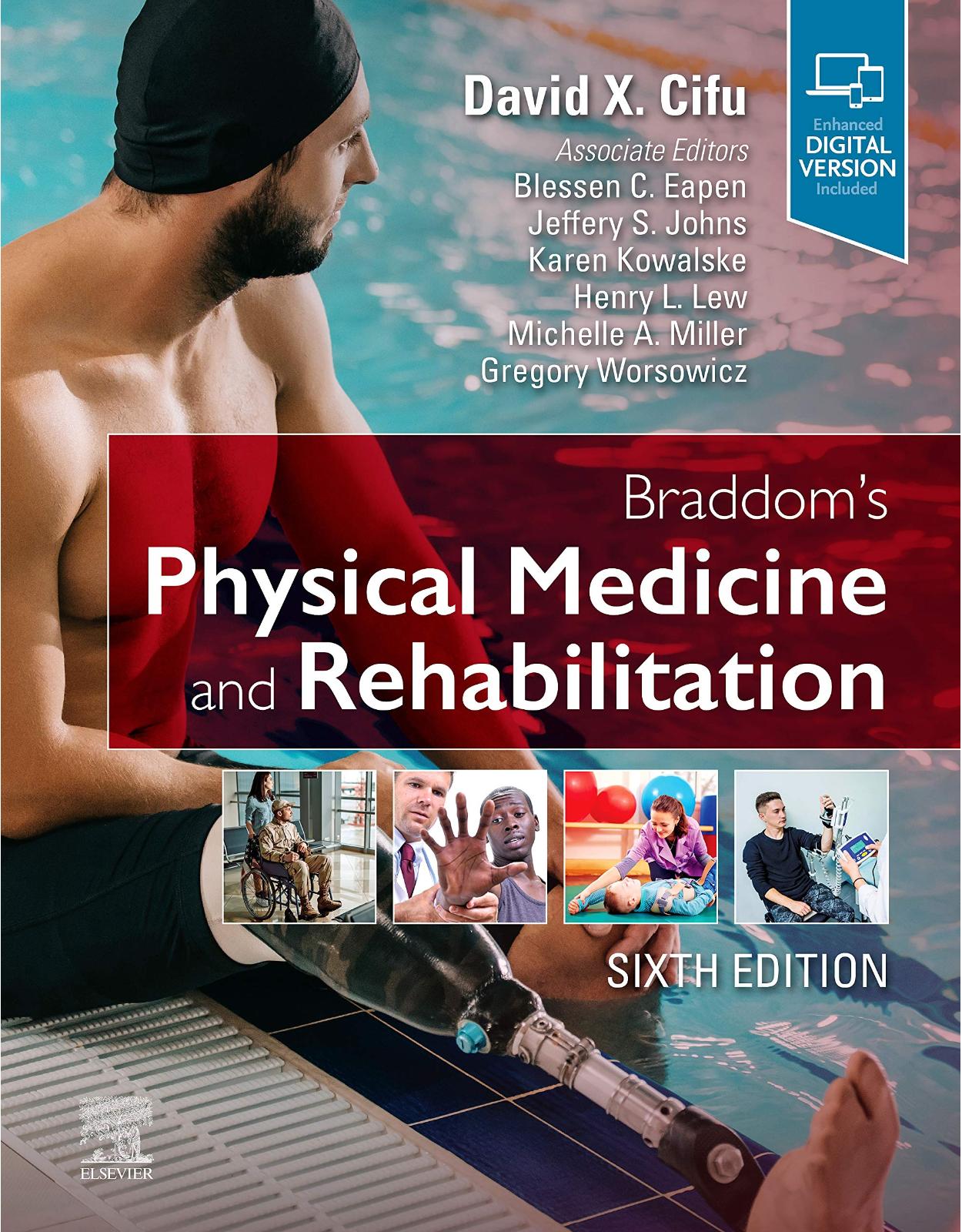
Braddom’s Physical Medicine and Rehabilitation
Livrare gratis la comenzi peste 500 RON. Pentru celelalte comenzi livrarea este 20 RON.
Disponibilitate: La comanda in aproximativ 4 saptamani
Autor: David X. Cifu MD
Editura: Elsevier
Limba: Engleza
Nr. pagini: 1184
Coperta: Hardcover
Dimensiuni: 22.23 x 3.81 x 27.94 cm
An aparitie: 26 Oct. 2020
Description:
Thoroughly updated to reflect the latest advances and technologies, Braddom’s Physical Medicine and Rehabilitation, 6th Edition, remains the market leader in the field of PM&R. For more than 20 years, this bestselling reference has been the go-to resource for the entire rehabilitation team, providing in-depth coverage of essential core principles along with the latest research, technologies, and procedures that enhance patient care and facilitate optimal return to function. In this edition, lead editor Dr. David X. Cifu and his team of expert associate editors and contributing authors employ a more succinct format that emphasizes need-to-know material, incorporating new key summary features, including high-yield information and study sheets for problem-based learning.
Focuses more heavily on rehabilitation, with case studies throughout and more comprehensive coverage of stroke evaluation, rehabilitation, and therapies.
Provides expanded information on key topics such as interventional pain management options, gait and prosthetics, USG, fluoroscopy, electrodiagnosis and more.
Features a new chapter on Occupational Medicine and Vocational Rehabilitation, plus enhanced coverage of the neurogenic bladder, rehabilitation and prosthetic restoration in upper limb amputation, and acute medical conditions including cardiac disease, medical frailty, and renal failure.
Discusses quality and outcome measures for medical rehabilitation, practical aspects of impairment rating and disability determination, integrative medicine in rehabilitation, and assistive technology.
Offers highly illustrated, templated chapters that are easy to navigate without sacrificing coverage of key topics.
Includes access to dozens of even more practical videos and hundreds of integrated self-assessment questions for more effective learning and retention.
Table of Contents:
Section 1. Evaluation
1. The Physiatric History and Physical Examination
The Physiatric History
The Physiatric Physical Examination
Musculoskeletal Examination
Assessment, Summary, and Plan
Summary
2. Examination of the Pediatric Patient
History
Physical Examination
Summary
3. Rehabilitation of Swallowing Disorders
Swallowing Physiology
Neurophysiology
Dysphagia
Bedside/Clinical Swallow Evaluation
Treatment of Dysphagia
4. Psychological Assessment and Intervention in Rehabilitation
Psychological Assessment
Psychological Intervention
Summary
5. Practical Aspects of Impairment Rating and Disability Determination
Terminology and Conceptualization of Disablement
From Classification of Causes of Death to International Classification of Functioning, Disability, and Health
Americans With Disabilities Act and Implications
Relating Impairment to Disability and Compensation Formulas
Major U.S. Disability Systems Compared With Attention to the Role of the Examining Physician
Impairment Rating Guides for Physicians With Attention to Guides, Sixth Edition
Application of the American Medical Association Guides, Sixth Edition, to Musculoskeletal Impairments
Independent Medical Examination: Elements and Reporting Expectations
Legal and Ethical Considerations
6. Occupational Medicine and Vocational Rehabilitation
Introduction
Occupational Medicine
Adaptations for People With Impairment/Disabilities
Vocational Rehabilitation
Return to Work Interventions
Conclusion
7. Quality and Outcome Measures for Medical Rehabilitation
Outcome Measures
Evidence and Guidelines
Performance Measures and Metrics
Safety and Accreditation
Maintenance of Certification and Quality Improvement
Conclusions
8. Electrodiagnostic Medicine
Clinical Assessment: History and Physical Examination
Appendix. Physiologic Basis for Electrodiagnostic Testing
Appendix. Motor Unit Recruitment and Morphology: Assessing Phases
Appendix. Instrumentation
Section 2. Treatment Techniques and Special Equipment
9. Rehabilitation and Prosthetic Restoration in Upper Limb Amputation
Demographics, Incidence, and Prevalence
Nomenclature and Functional Levels of Amputations
Principles of Limb Salvage and Amputation Surgery
Acute Management: Preamputation Through Early Rehabilitation
Upper Limb Prostheses
Bilateral Upper Limb Amputee
Advances in Prosthetic Technology
Prosthetic Training
Follow-Up
10. Lower Limb Amputation and Gait
Epidemiology
Amputation Terminology
Rehabilitation Implications of Amputation Level and Surgical Technique
Residual Limb and Skin Care
Pain Management
Psychological Support
Pre-prosthetic Phase Rehabilitation Considerations
Prosthetic Training Phase Considerations
Functional Classification
Prosthetic Restoration
Pediatric Lower Limb Loss
Normal Human Gait
Summary
11. Upper Limb Orthotic Devices
Principles and Indications
Classification
Biomechanical and Anatomic Considerations
Diagnostic Categories and Orthotic Devices
Pediatric Applications
Special Considerations
Orthotic Materials
International Considerations
Summary
12. Lower Limb Orthoses
Introduction
Shoes
Foot Orthoses
Common Foot Conditions
Pediatric Shoes
Ankle-Foot Orthoses
Knee Orthoses
Hip Orthoses
Ambulation Aids
Pediatric Orthoses
13. Spinal Orthoses
History of Spinal Orthotic Management
Terminology
Prefabricated or Custom Orthoses
Orthotic Prescription
Spinal Anatomy
Normal Spine Biomechanics
Description of Orthoses
Scoliosis
Emerging Technology
Summary
14. Wheelchairs and Seating Systems
Wheelchairs and Seating Systems
Assessment Tools
Wheelchairs
Summary
15. Therapeutic Exercise
General Principles
Cardiovascular Exercise
Muscle Physiology
Flexibility
Neurofacilitation Techniques
Exercise for Special Populations
Summary
16. Manipulation, Traction, and Massage
Overview
Manipulation
Historical Perspective of Manual Medicine
Overview of Manual Medicine Types
Spinal Mechanics
Somatic Dysfunction
Physiologic Rationale for Manual Therapies
Descending Inhibition
Indications and Goals of Treatment
Examination and Diagnosis
Palpation for Tissue Texture Abnormality
Assessment of Fascia
Types of Techniques
Evidence-Based Use of Manual Therapies in Practice
Contraindications and Side Effects
Traction
Massage
Evidence-Based Use of Massage
17. Physical Agent Modalities
Cryotherapy
Superficial Heat
Spinal Traction
Deep Heat
Electrotherapy
Low-Level Laser Therapy
Other Modalities: International Perspective
18. Integrative Medicine in Rehabilitation
Introduction
Whole Medical Systems
Mind and Body Practices
Natural Products
Economics of Complementary and Integrative Healthcare
Conclusion
19. Assistive Technology and Environmental Control Devices
Defining Assistive Technology
History and Legislation of Assistive Technology
Overview of Assistive Technology Devices
Assistive Technology for Communication Disorders
Assistive Technology for Mobility Impairments
Ergonomics and Prevention of Secondary Injuries
Assistive Technology for Hearing Impairments
Assistive Technology for Visual Impairments
Assistive Technology for Cognitive/Learning Disabilities
Selecting Appropriate Assistive Technologies
Principles of Clinical Assessment
Physician Responsibilities
Funding Assistive Technology
Summary and Future Directions
Section 3. Common Clinical Problems
20. Neurogenic Lower Urinary Tract Dysfunction
Neuroanatomy and Physiology
Evaluation of Neurogenic Bladder Dysfunction
Nonpharmacologic Treatment of Neurogenic Lower Urinary Tract Dysfunction
Pharmacologic Treatment of Neurogenic Bladder Dysfunction
Surgical Treatment of Neurogenic Bladder Dysfunction: To Increase Capacity
Surgical Treatments for Neurogenic Bladder Dysfunction: To Increase Contractility
Surgical Treatment of Neurogenic Bladder Dysfunction: To Increase Outlet Resistance
Surgical Treatment of Neurogenic Bladder Dysfunction: To Decrease Outlet Resistance
Other Methods of Decreasing Outflow Resistance
Differential Diagnosis of Neurogenic Bladder Dysfunction
Complications of Neurogenic Voiding Dysfunction
Summary
21. Neurogenic Bowel: Dysfunction and Rehabilitation
Introduction
Epidemiology
Impact
Neuroanatomy and Physiology of the Gastrointestinal Tract
Enteric Nervous System
Enteric Nervous System: Relationships to the Spinal Cord and Brain
The Alimentary Neuromotor System
Pathophysiology of Gastrointestinal Dysfunction
Defecatory Dysfunction: Constipation and Fecal Incontinence
Reflexic Upper Motor Neurogenic Bowel
Areflexic Lower Motor Neuron Bowel
Gastrointestinal Dysfunction in Common Neurologic Disorders
Management
Treatment Approaches and Rationale
22. Sexual Dysfunction and Disability
Sexual Response and Behavior
Types of Sexual Dysfunction
Sexual Dysfunction in Disability and Chronic Disease
Sexual Dysfunction Related to Medication Use in Individuals With Disability
Evaluation of Sexual Dysfunction
Treatment of Sexual Dysfunction
Conclusion
23. Spasticity
Introduction
Pathophysiology
Clinical Presentation, Goal Setting, and Assessment
Management
24. Prevention and Management of Chronic Wounds
Introduction
Abnormal Wound Healing
Treatment
Conclusion
25. Vascular Diseases
Arterial Diseases
Arterial Evaluation
Management
Venous Disease
Venous Evaluation
Management
Lymphatic Disease
Evaluation
Treatment of Lymphedema
Conclusion
26. Burns
Epidemiology of Burn Injury
Acute Physiatric Assessment of the Burned Individual
Acute Wound Care
Acute Pain Management
Acute Surgical Procedures in Burn Injuries
Other Acute Conditions Treated in the Burn Center
Presence of Inhalation Injury
Polytrauma and Burns
Catabolism and Metabolic Abnormalities
Nutrition and Swallowing in Burns
Peripheral Neuropathies
Heterotopic Ossification
Hypertrophic Scarring
Contractures
Burn Scar Pruritus
Scar Measurement
Inpatient Rehabilitation Admission for Burned Individuals
Psychosocial Adjustment
Community Reintegration
27. Acute Medical Conditions: Cardiopulmonary Disease, Medical Frailty, and Renal Failure
Cardiopulmonary Rehabilitation
Cardiac Anatomy and Physiology
Pulmonary Anatomy and Physiology
Pulmonary Rehabilitation
Cardiac Rehabilitation
Conclusion
Frailty
Renal Failure
28. Chronic Medical Conditions:: Pulmonary Disease, Organ Transplantation, and Diabetes
Pulmonary Rehabilitation
Classification of Pulmonary Disease
Symptoms of Pulmonary Disease
Treatment Options in Pulmonary Disease
Management Options for Individuals With Severe Lung Disease and Long-Term Outcomes
Special Considerations
Summary
Organ Transplantation
Renal Transplantation
Future
Heart Transplantation
Rehabilitation in Lung Transplantation
Liver Transplantation
Rehabilitation Management
Postoperative
Future
Rehabilitation Management of Diabetes Mellitus
Conclusion
29. Cancer Rehabilitation
Epidemiology
Disease Considerations
Constitutional Symptoms
Impairments in Cancer
Rehabilitation Approaches
Precautions in Cancer Rehabilitation
Conclusion
30. Geriatrics
Changes in the Body With Aging
Evaluation of the Elderly Patient
Conditions and Diseases in the Elderly
Management Issues in the Elderly
Summary
31. Rheumatologic Rehabilitation
Introduction to Rheumatic Diseases
Osteoarthritis
Management of Osteoarthritis
Rheumatoid Arthritis
Ankylosing Spondylitis
Psoriatic Arthritis
Gout and Other Crystal-Related Arthropathies
Systemic Lupus Erythematosus
Septic Arthritis
Rehabilitative Management of Rheumatic Diseases
Summary
Section 4. Issues in Specific Diagnoses
32. Common Neck Problems
Introduction and Epidemiology
Neuroanatomy of the Cervical Spine
Common Clinical Disorders
Conclusion
33. Low Back Disorders
Epidemiology
Public Health Perspective
Anatomy and Biomechanics of the Lumbar Spine
Pain Generators of the Lumbar Spine
History and Physical Examination of the Low Back
Clinical Evaluation: Diagnostics
Differential Diagnosis and Treatment: Back Pain Greater Than Leg Pain
Procedures for Facet-Mediated Back Pain
Treatment of Low Back Pain
Prognosis of Low Back Pain
Spinal Fractures
Differential Diagnosis and Treatment: Leg Pain Greater Than Back Pain
Low Back Pain in Special Populations
34. Osteoporosis
Bone Function and Structure
Bone Remodeling
Pathogenesis
Classification of Osteoporosis
Hormones and Physiology of Bone
Role of Sex Steroids
Other Factors Affecting Bone Mass
Effect of Aging on Bone Mass
Clinical Manifestations of Osteoporosis
Fractures and Management
Vertebral Fractures
New Hypothesis on the Most Effective Exercise to Reduce Risk for Vertebral Fracture
Vertebroplasty and Kyphoplasty
Hip Fracture
Hip Pads for Fracture Prophylaxis
Sacral Insufficiency Fracture
Diagnostic Studies in Osteoporosis
Treatment
Posture Training Program and the Osteoporotic Skeletal Frame
Pharmacologic Interventions
35. Upper Limb Pain and Dysfunction
Introduction
Upper Limb Physical Examination
Rehabilitation Principles of Upper Limb Injury
Musculoskeletal Problems of the Upper Limb
Conclusion
36. Lower Limb Pain and Dysfunction
Introduction
Part I: Disorders of the Hip and Groin
Part II: Disorders of the Thigh and Knee
Part III: Disorders of the Lower Limb, Ankle, and Foot
Summary
37. Chronic Pain
Prevalence
Historical Overview
Physiology and Pathophysiology of Pain
Behavioral Treatment Approaches
Diagnostic Categories Common in Patients With Chronic Pain
Sleep and Chronic Pain
Assessment
Treatment
Anticonvulsant Medications
Summary
38. Pelvic Floor Disorders
Pelvic Floor Neuromusculoskeletal Anatomy
Overview of Terminology
Physical Examination of the Pelvic Floor
Types of Pelvic Floor Dysfunction
Overlap of Pelvic Floor Disorders and Chronic Pelvic Pain
Conclusion
39. Sports Medicine and Adaptive Sports
Role of the Team Physician
Principles of Conditioning and Training
Injury Prevention and Rehabilitation
Biomechanics of Sports
Pharmacology in Sports
Preparticipation Examination
Emergency Assessment and Care
Specific Diagnoses in Sports Medicine
Specific Populations
Adaptive Sports Medicine
Event Administration
40. Motor Neuron Diseases
Definition
Classification
Diagnosis
Treatment
Conclusions
41. Neuropathies
Anatomy and Physiology
Mechanism and Classification of Neuropathies
Mononeuropathies
Focal Neuropathies of the Upper Extremity
Focal Neuropathies of the Lower Extremities
Generalized Peripheral Neuropathies
Complications of Neuropathies
Specific Neuropathies
42. Myopathic Disorders
Physiology and Anatomy of Muscle Function
Clinical and Diagnostic Evaluation in Myopathic Disease
Specific Myopathies
Duchenne and Becker Muscular Dystrophy (Dystrophinopathies)
Disease-Modifying Treatments
Emery-Dreifuss Muscular Dystrophy
Facioscapulohumeral Muscular Dystrophy
Oculopharyngeal Muscular Dystrophy
Limb Girdle Muscular Dystrophy
Congenital Muscular Dystrophy
Distal Inherited Muscular Dystrophies
Dystrophic Myotonias
Congenital Myopathies
Nondystrophic Myotonias
Metabolic Myopathies
Disorders of Glycogen Metabolism
Disorders of Lipid Metabolism
Mitochondrial Myopathies
Progressive External Ophthalmoplegia
Specific Acquired Myopathies (Table 42.8)
Acquired Metabolic Myopathies
Toxic Myopathies
General Rehabilitation Principles in Myopathic Disorders
The Interdisciplinary Team
Swallowing Disorders
Nutritional Management
Rehabilitation and Exercise Management
Adaptive Equipment for Impaired Upper Extremity Function
Conclusions and Future Directions
43. Traumatic Brain Injury
Definitions
Pathophysiology Associated With Traumatic Brain Injury
Evaluation and Treatment of Traumatic Brain Injury
Inpatient Rehabilitation Assessment and Management
Pediatrics
Acute Prognostic Indicators of Outcome: A Clinical and Translational Research Perspective
Neuroimaging Modalities in Traumatic Brain Injury Research
Outcomes, Community Integration, Resources, and Prevention
Traumatic Brain Injury Prevention
44. Stroke Rehabilitation
Introduction
Types of Strokes
Initial Workup/Management
Complications of Stroke
Rehabilitation: Treatment of Stroke Sequelae
Prognosis
Summary
45. Degenerative Movement Disorders of the Central Nervous System
Introduction
Hypokinetic Disorders
Parkinson Plus Syndromes
Summary
46. Multiple Sclerosis
Costs
Epidemiology
Pathogenesis
Pharmacologic Management
Rehabilitation, Exercise, and Symptom Management
Neurogenic Bladder, Neurogenic Bowel, and Sexual Dysfunction
Cognitive Impairment
Pediatric Multiple Sclerosis
Multiple Sclerosis in Pregnancy
Summary
47. Cerebral Palsy
Introduction
Medical Management
Therapeutic Management
Orthopedic Management
Complementary and Alternative Medicine
Transition to Adulthood and Aging With Cerebral Palsy
48. Myelomeningocele and Other Spinal Dysraphisms
Historical Background, Terminology, and Nomenclature
Epidemiology
Risk Factors/Etiology
Genetic Factors
Embryology
Prenatal Diagnosis and Management
Neonatal and Early Management
Childhood Management
Myelomeningocele in Adults
Summary
49. Spinal Cord Injury
Historical Perspective
Model Systems of Care
Subspecialty of Spinal Cord Injury Medicine
Epidemiology
Anatomy, Mechanics, and Syndromes of Traumatic Injury
Classification of Spinal Cord Injury
Nontraumatic Spinal Cord Injury
Outcomes of Traumatic Spinal Cord Injury
Acute Phase of Injury
Rehabilitation Phase of Injury
Exoskeletal Ambulation Training
Epidural Spinal Cord Stimulation
Chronic Phase of Injury
Secondary Conditions
Other (Neuropathic) Pain
Hip and Spine Deformities in Children
Summary
50. Auditory, Vestibular, and Visual Impairments
Auditory Impairments and Hearing Loss
Overview of Auditory Anatomy and Physiology
Auditory Assessment
Risk Factors for Hearing Impairments
Symptoms of Hearing Loss
Auditory Rehabilitation
Vestibular Impairments
Overview of Vestibular Anatomy and Physiology
Vestibular Symptoms
Vestibular Assessment
Risk Factors, Comorbidities, and the Epidemiology of Vestibular Disorders
Vestibular Rehabilitation
Efficacy of Vestibular Rehabilitation
Visual Impairments
Overview of Vision Anatomy and Physiology
Risk Factors for Developing Vision Impairments
Vision Assessment
Conclusion
Index
Instructions for online access
| An aparitie | 26 Oct. 2020 |
| Autor | David X. Cifu MD |
| Dimensiuni | 22.23 x 3.81 x 27.94 cm |
| Editura | Elsevier |
| Format | Hardcover |
| ISBN | 9780323625395 |
| Limba | Engleza |
| Nr pag | 1184 |
-
1,16600 lei 1,04300 lei

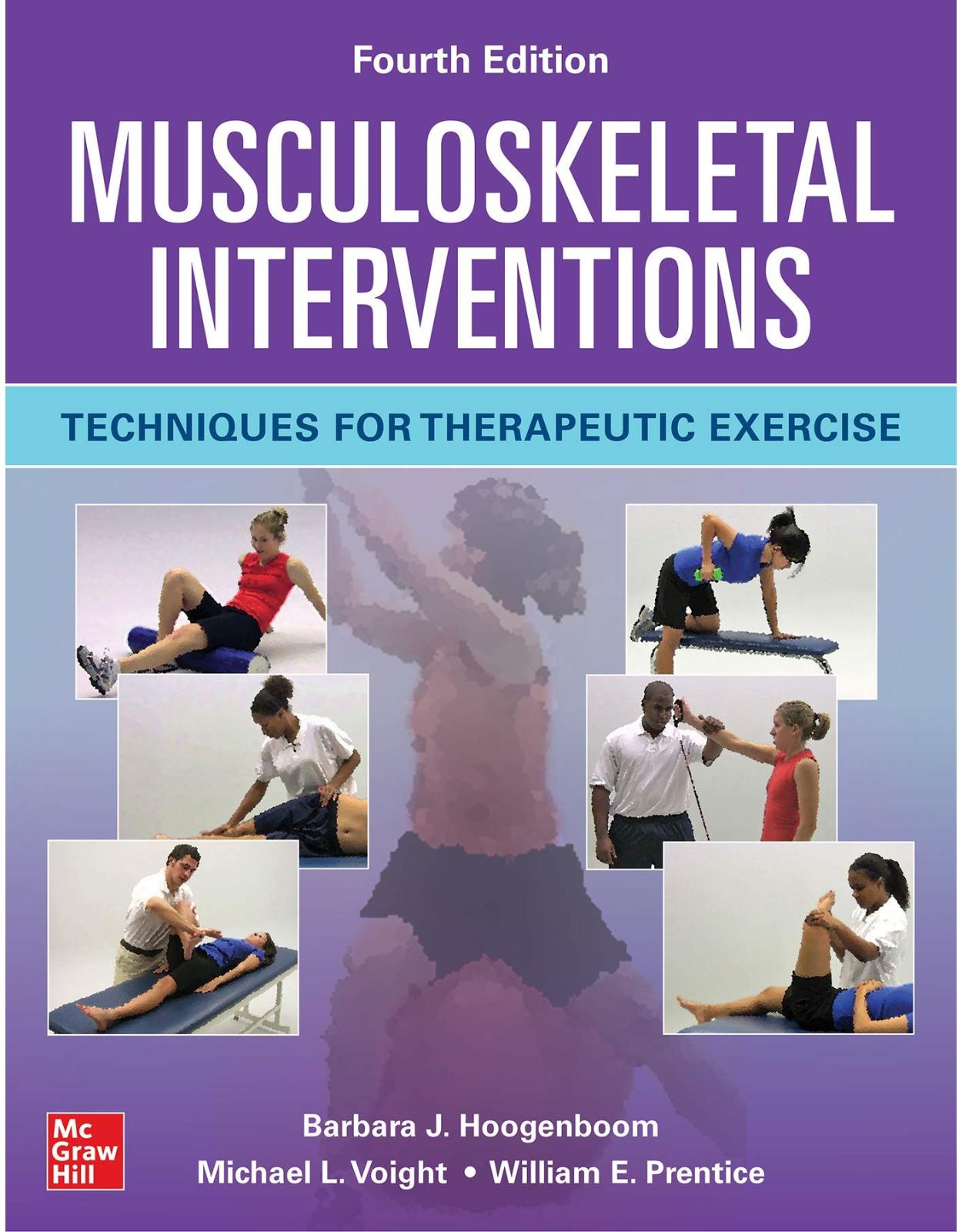
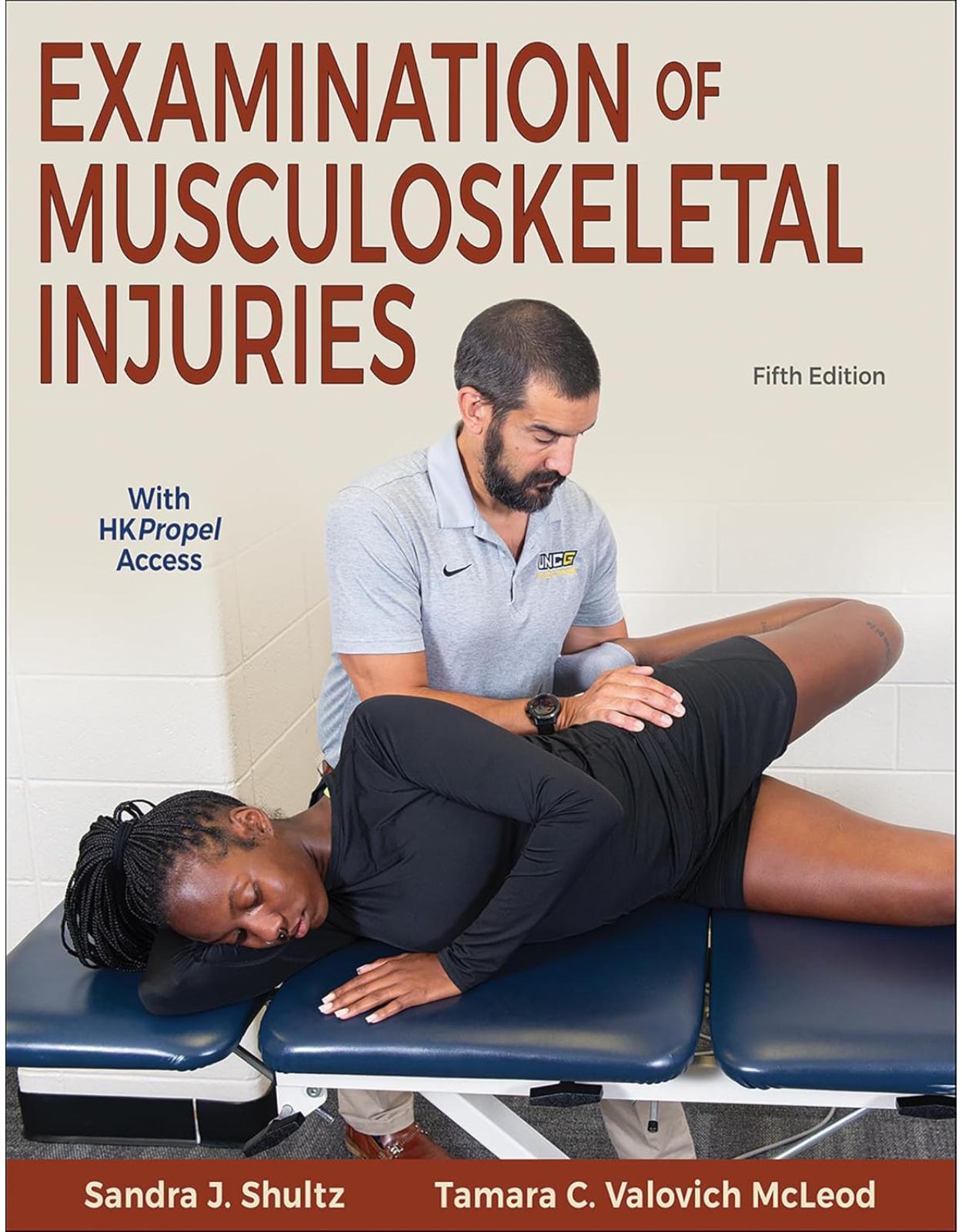
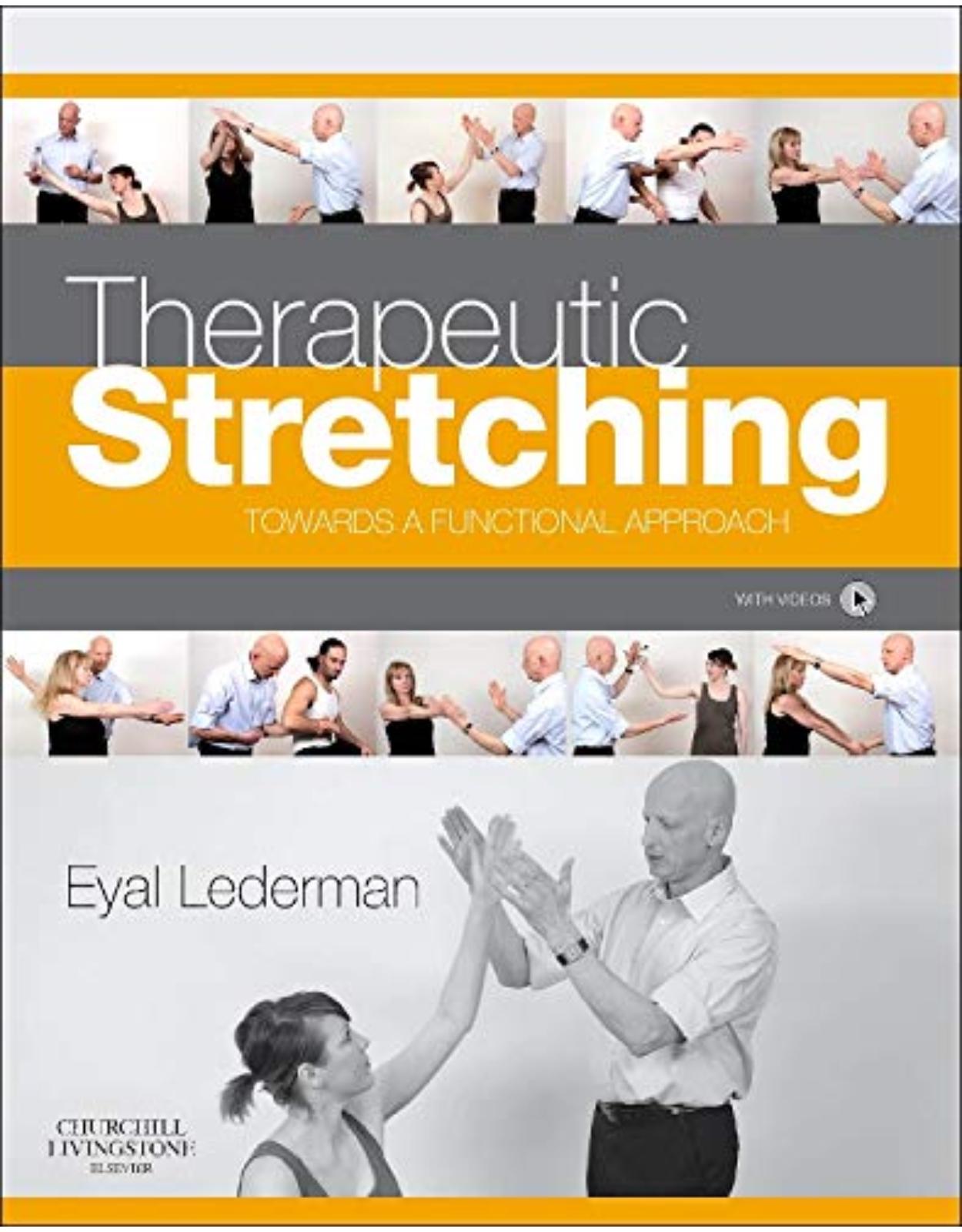
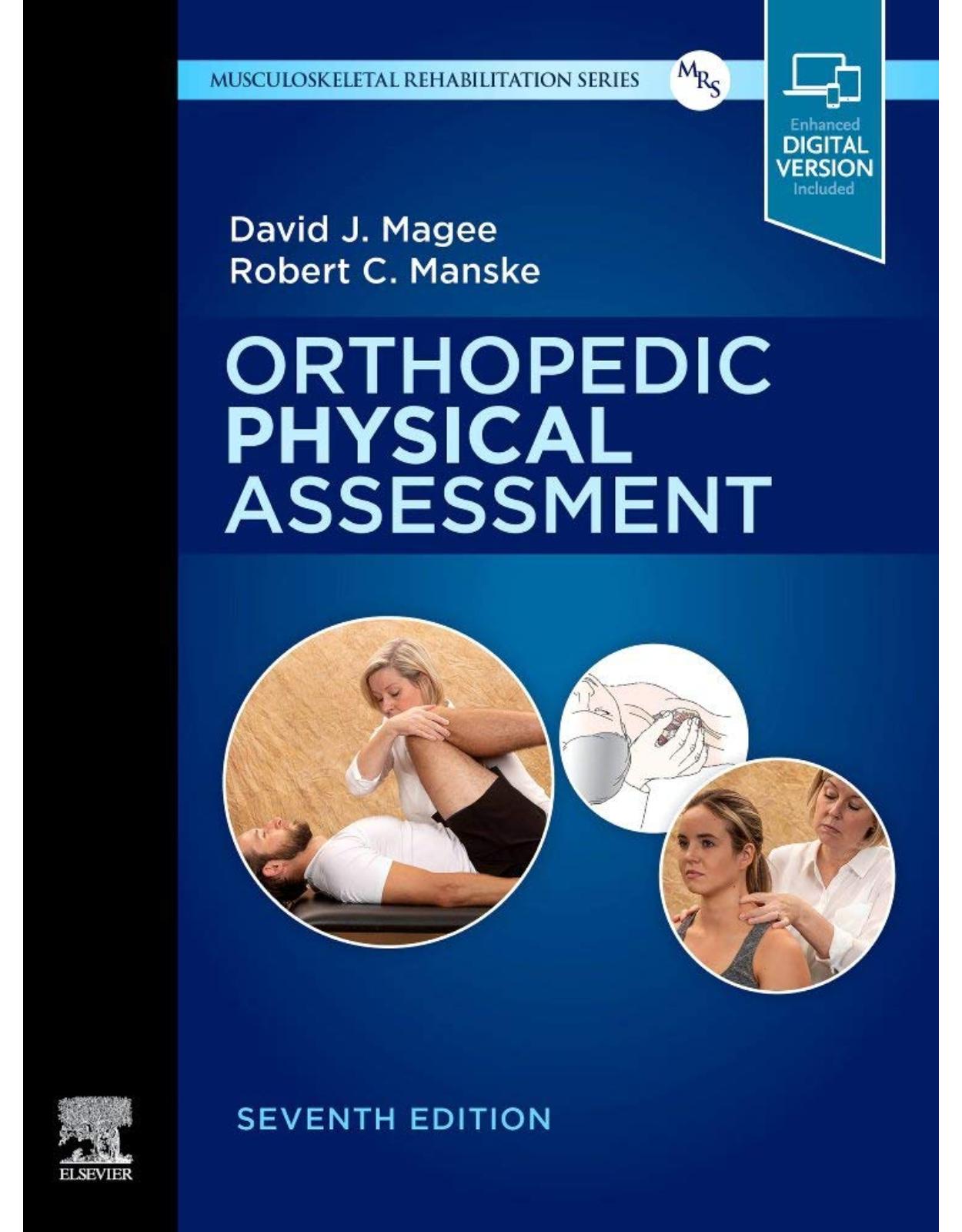
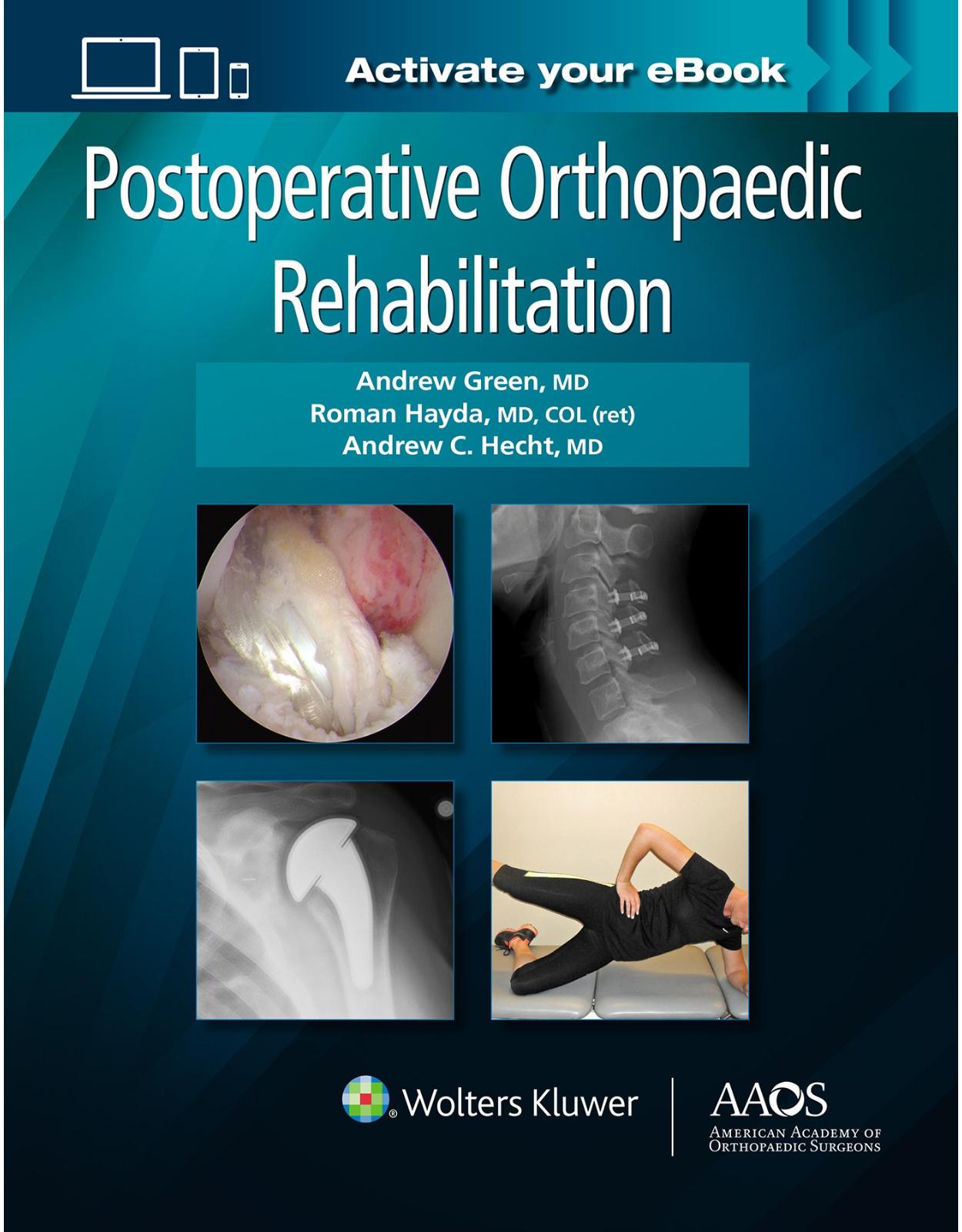
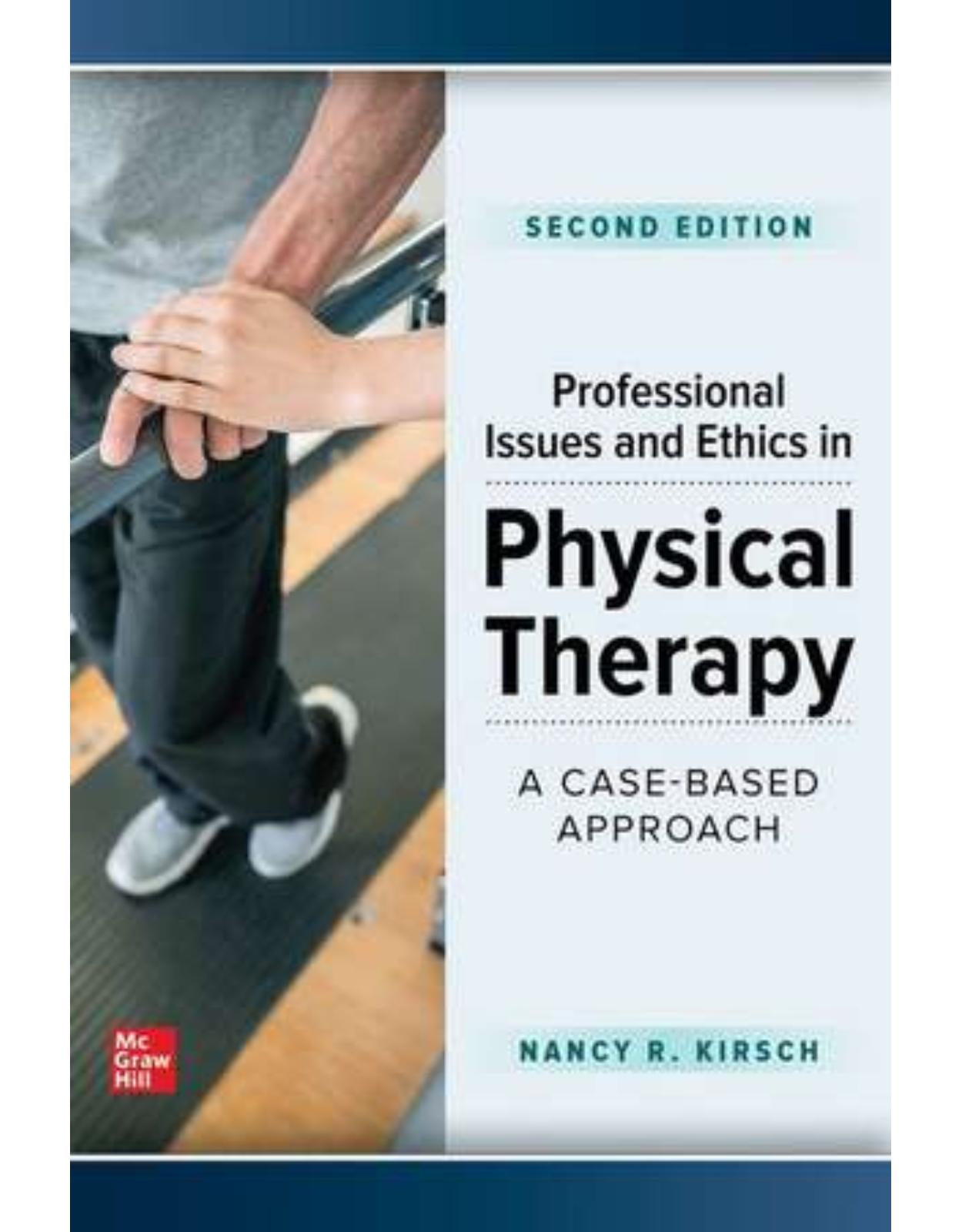


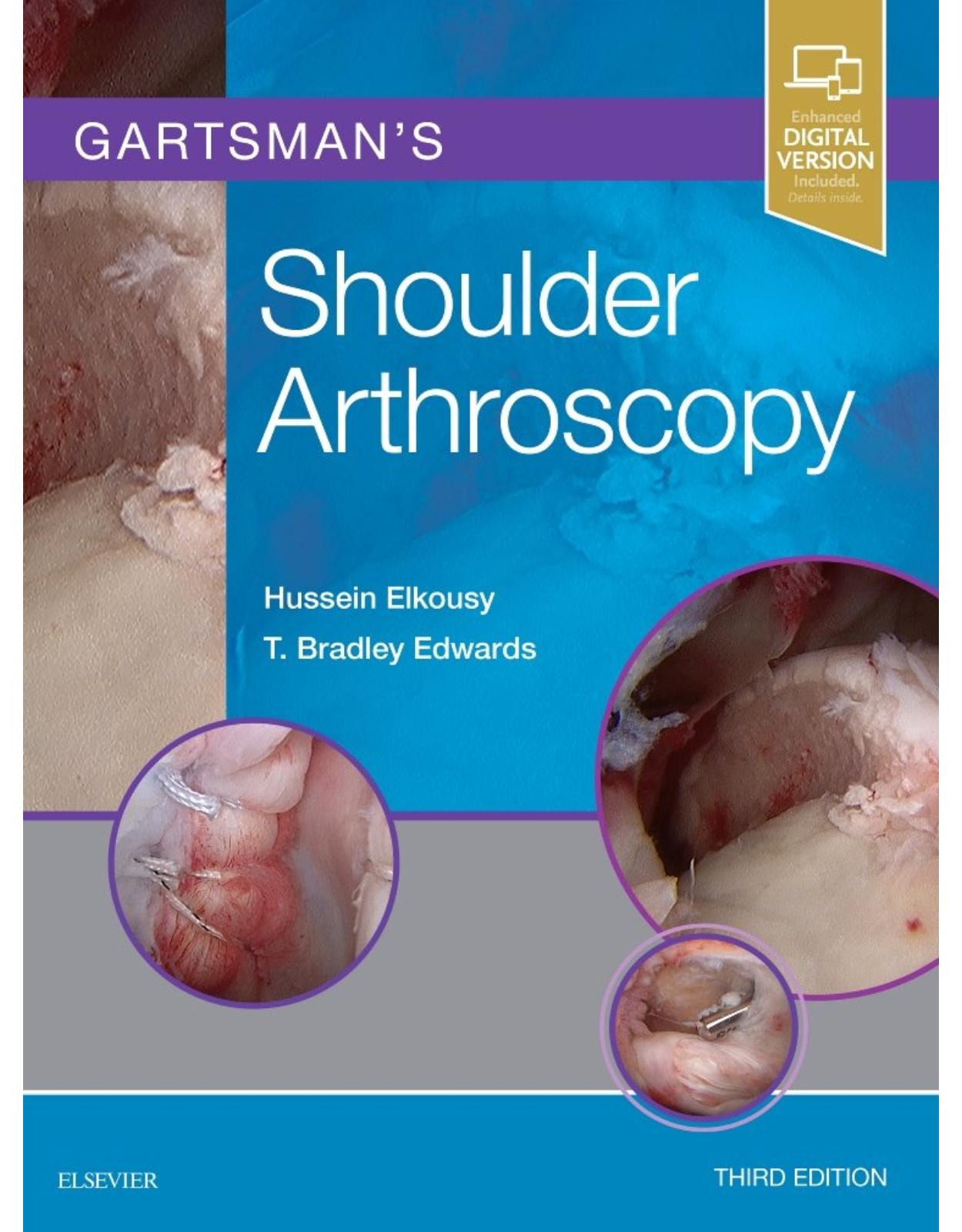
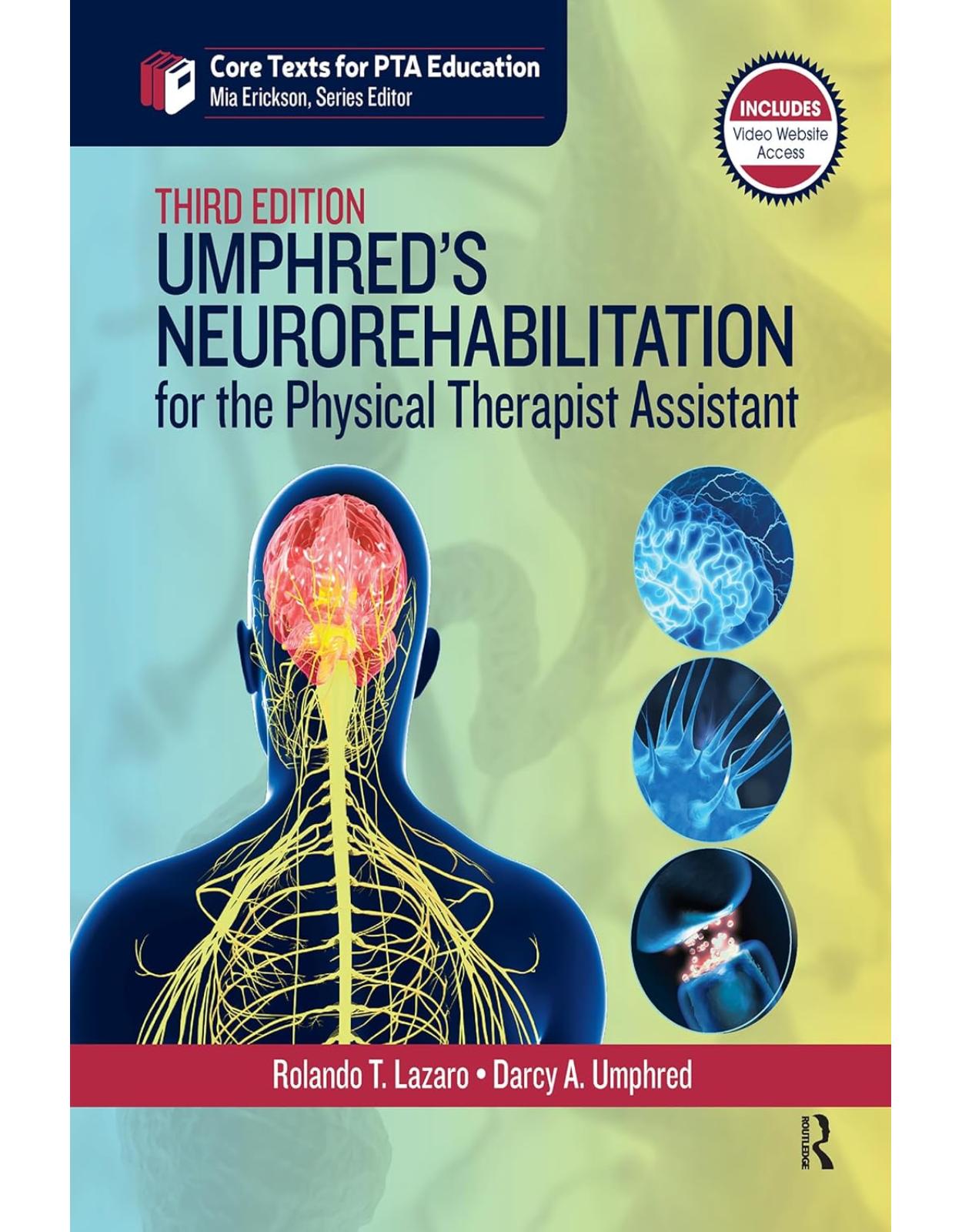
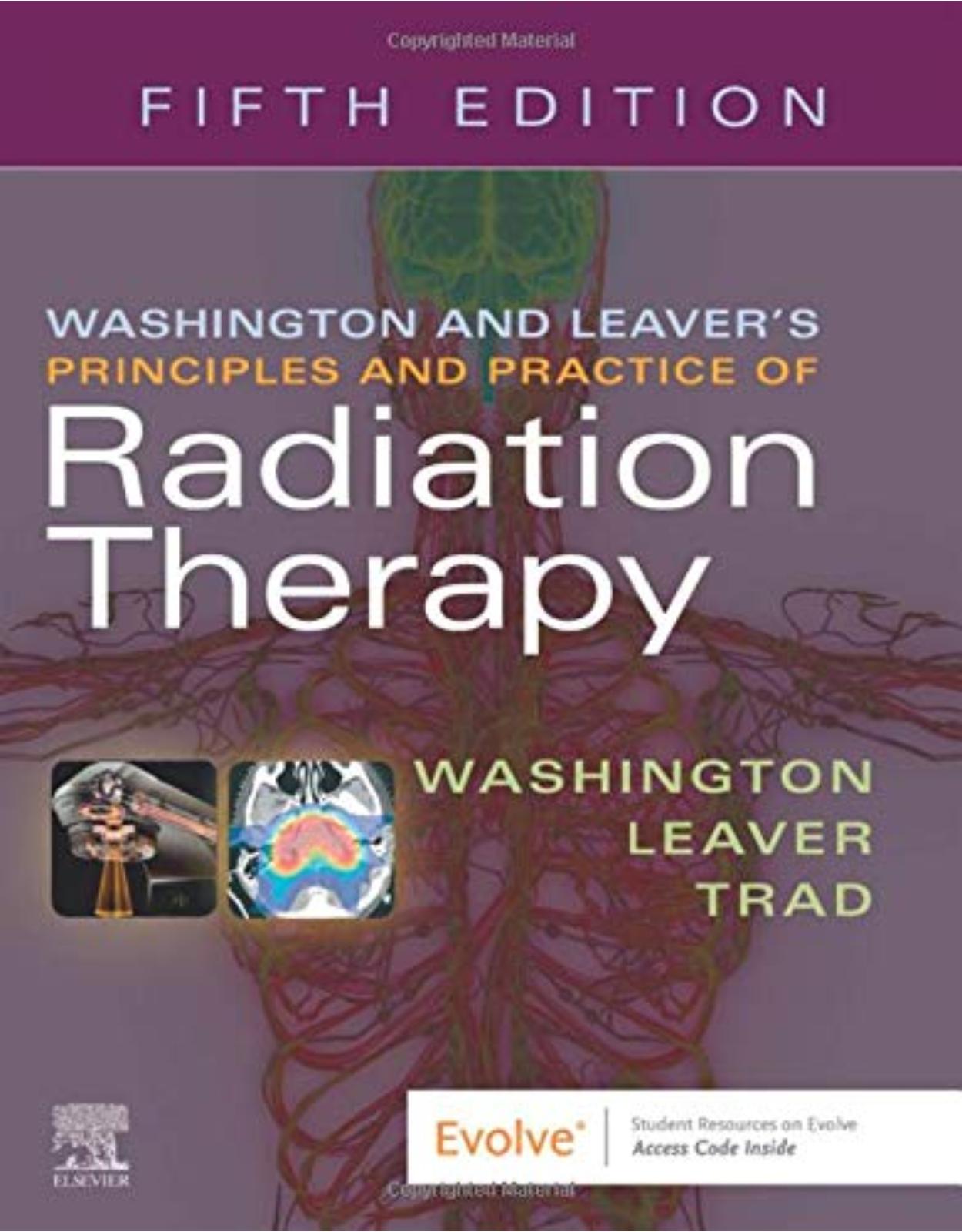
Clientii ebookshop.ro nu au adaugat inca opinii pentru acest produs. Fii primul care adauga o parere, folosind formularul de mai jos.